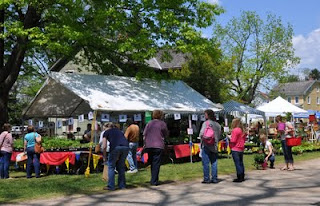
When viewing the delicate strips of bobbin lace produced by craftsperson and guide Marian Blouch (right), it is easy to see how they were once reserved for the nobility. This type of lace, created by weaving threads from individual bobbins in a pattern along a pillow, once enjoyed prestige so high that it was often smuggled around Europe.
The craft grew up as a cottage industry in Europe in the late 15th to early 16th centuries, employing men, women and children in its production. It can be made from cotton, linen, silk, wool, or even precious metals such as gold and silver. According to Emily Jackson in her book, History of Handmade Lace, its heyday was during the 16th through eighteenth centuries, when lace was worn by nobles around the waist and neck in various ways—from high and stiff collars of Elizabethan times (below), to low and draping collars of the seventeenth century, to neck cravats popular during the time of the American Revolution—and also bordered articles in the home.

The industry employed thousands of artisans until machines, first invented around 1818 in France, slowly replaced them as the technology to manufacture fine lace improved. Hand-made lace competed by becoming more and more complicated. Because new machines that could reproduce these designs kept pace with the lace-makers abilities to adapt, though, hand-made lace became unprofitable on a massive scale. By the end of the 19th century, the trade that had once been the cornerstone of many European cities and towns was reduced to a hobby.
Today, lace is taught by books and by masters in organizations such as the International Old Lacers Incorporated, of which Marion belongs. Marion herself was taught by a Danish instructor and has passed on her knowledge to her children and to past Summer Institute classes. She once taught a pastor over the phone, too. In the 35 years that she has devoted her time to bobbin lace making, the craft has taken her all around the United States and Europe. Together with other masters, she learns and passes on this treasured skill.
 You, too, can learn bobbin lacemaking during Marian’s Winter Institute class. The bobbin lace class meets on Saturday and Sunday, February 18 & 19, 2012. Saturday’s class runs from 9:00 AM to 4:30 PM and Sunday’s class starts at 1:00 PM and lasts until 4:30 PM. Cost for Landis Valley Associates members is $152 and the cost for non-members is $160. Materials fees will be extra. For more information, either visit the calendar on our website, http://www.landisvalleymuseum.org/, or call Museum Educator Tim Essig at 717-569-5783.
You, too, can learn bobbin lacemaking during Marian’s Winter Institute class. The bobbin lace class meets on Saturday and Sunday, February 18 & 19, 2012. Saturday’s class runs from 9:00 AM to 4:30 PM and Sunday’s class starts at 1:00 PM and lasts until 4:30 PM. Cost for Landis Valley Associates members is $152 and the cost for non-members is $160. Materials fees will be extra. For more information, either visit the calendar on our website, http://www.landisvalleymuseum.org/, or call Museum Educator Tim Essig at 717-569-5783.















